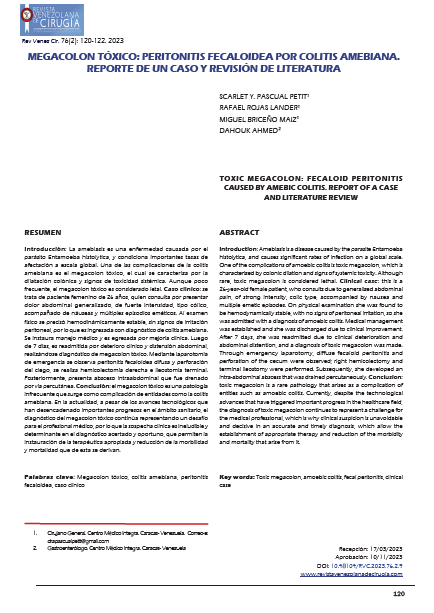Abstract
Amebiasis is a disease caused by the parasite Entamoeba histolytica, and causes significant rates of infection on a global scale. One of the complications of amoebic colitis is toxic megacolon, which is characterized by colonic dilation and signs of systemic toxicity. Although rare, toxic megacolon is considered lethal. Clinical case: this is a 26-year-old female patient, who consults due to generalized abdominal pain, of strong intensity, colic type, accompanied by nausea and multiple emetic episodes. On physical examination she was found to be hemodynamically stable, with no signs of peritoneal irritation, so she was admitted with a diagnosis of amoebic colitis. Medical management was established and she was discharged due to clinical improvement. After 7 days, she was readmitted due to clinical deterioration and abdominal distention, and a diagnosis of toxic megacolon was made. Through emergency laparotomy, diffuse fecaloid peritonitis and perforation of the cecum were observed; right hemicolectomy and terminal ileostomy were performed. Subsequently, she developed an intra-abdominal abscess that was drained percutaneously. Conclusion: toxic megacolon is a rare pathology that arises as a complication of entities such as amoebic colitis. Currently, despite the technological advances that have triggered important progress in the healthcare field, the diagnosis of toxic megacolon continues to represent a challenge for the medical professional, which is why clinical suspicion is unavoidable and decisive in an accurate and timely diagnosis, which allows the establishment of appropriate therapy and reduction of the morbidity and mortality that arise from it.

This work is licensed under a Creative Commons Attribution-NonCommercial 4.0 International License.
Copyright (c) 2023 REVISTA VENEZOLANA DE CIRUGÍA
